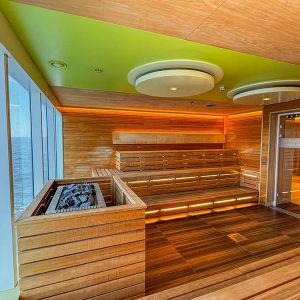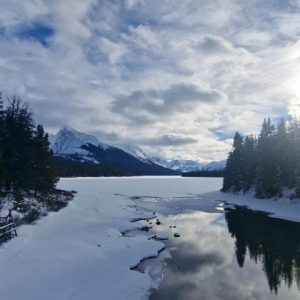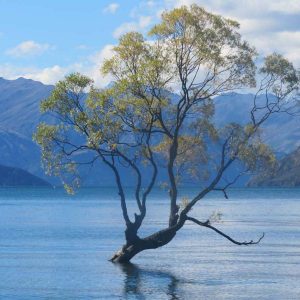Heading towards the North Pole in search of polar bears
As we sat down to our second dinner on G Expedition and started to get to know our fellow shipmates nobody could have predicted the unforgettable treat about to be served up between the main course and dessert when the PA system interrupted the convivial chit-chat. “This is your expedition leader Sarah speaking, our captain has seen our first polar bear at 2 o’clock”.
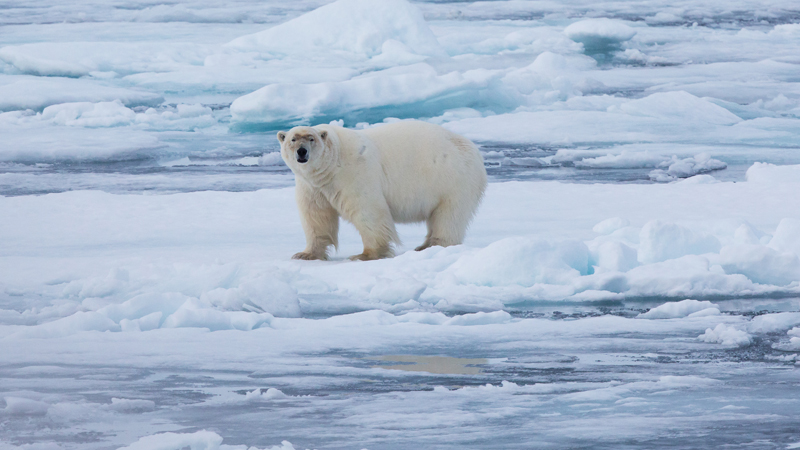 Those of us who had already forgotten the ship’s bow denoted 12 on the wildlife spotting clock face didn’t have to worry about being late off the mark. We simply followed fellow diners who downed knives and forks with a clatter, left half-finished meals, grabbed cameras and binoculars and dashed to the starboard side. On the shoreline was the distant but unmistakable outline of a polar bear ambling at a leisurely pace close to the water’s edge.
Those of us who had already forgotten the ship’s bow denoted 12 on the wildlife spotting clock face didn’t have to worry about being late off the mark. We simply followed fellow diners who downed knives and forks with a clatter, left half-finished meals, grabbed cameras and binoculars and dashed to the starboard side. On the shoreline was the distant but unmistakable outline of a polar bear ambling at a leisurely pace close to the water’s edge.
The day before, after a flight of less than three hours from Oslo, we had sailed out of Longyearbyen on the island of Spitsbergen, one of the most northernmost inhabited areas in the world. With a population of 2,000 drawn by the wild landscapes and coal mining industry established in 1906 by American John Longyear, the small town has a handful of sights such as the evocative North Pole Expedition Museum. Spitsbergen is the largest island in the 23,561 square mile Svalbard archipelago first mentioned in Icelandic texts in 1194 and referred to as the ‘land of cold coasts’.
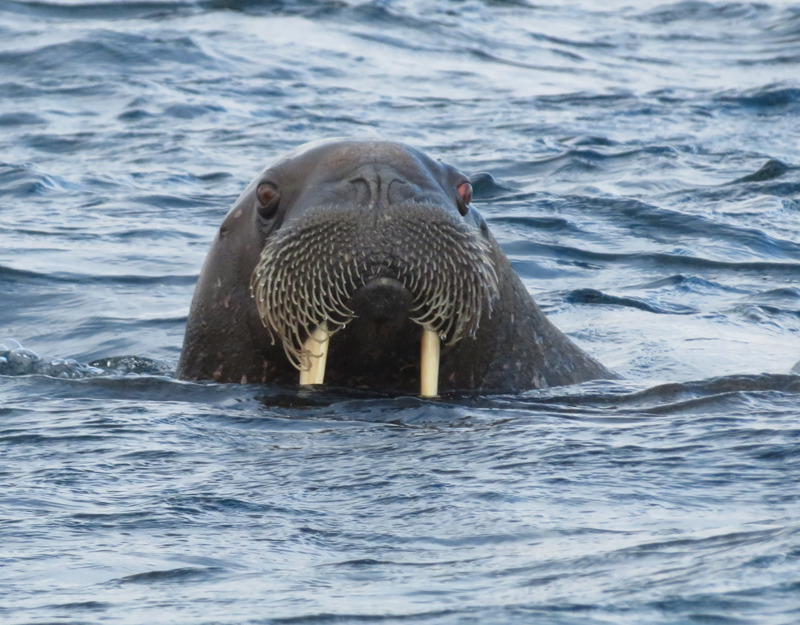 For much of the year this is a harsh, inhospitable and inaccessible landscape to all but the incredible species of wildlife, flora and fauna that have evolved and adapted to make it their home. The most remarkable is the polar bear, descended from brown bears trapped in Siberia during the last Ice Age, and now equipped with hollow hair that acts as an insulating layer and a metabolism that can be slowed to cope with long periods without food.
For much of the year this is a harsh, inhospitable and inaccessible landscape to all but the incredible species of wildlife, flora and fauna that have evolved and adapted to make it their home. The most remarkable is the polar bear, descended from brown bears trapped in Siberia during the last Ice Age, and now equipped with hollow hair that acts as an insulating layer and a metabolism that can be slowed to cope with long periods without food.
However, the summer provides a window of opportunity for less well-equipped mortals to discover this surprisingly diverse region where thawing ice floes and frozen landscapes make way for plant-rich tundra and the chance to experience some of Mother Nature’s most incredible spectacles such as close-up views of glaciers formed thousands of years ago and hundreds of walrus basking in the Arctic sunlight; one even swimming close to our Zodiac.
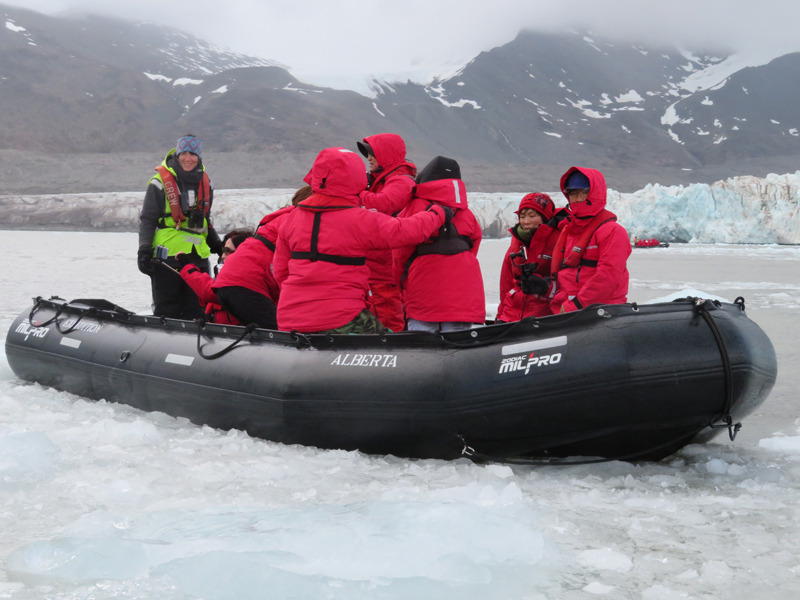 Akin to school houses or something out of Harry Potter’s Hogwarts we were divided into groups – Walrus, Puffin, Arctic Fox and Guillemot – defining the time we are called to our allocated coat pegs in the ‘mud room’ to get ready for the wildlife spotting Zodiac cruises and guided walks on the fringe of isolated islands and fjords in the archipelago. There was much excitement as we got ready for the first landing and were fitted out with cosy thermal boots provided for the duration and high-performance parkas that we got to keep afterwards. We resembled a class of schoolchildren as we initially muddled through deciding how many layers to wear, and in which order, and fitting life jackets. But patient help was always at hand, and we soon got to grips with it all – and stayed toasty throughout.
Akin to school houses or something out of Harry Potter’s Hogwarts we were divided into groups – Walrus, Puffin, Arctic Fox and Guillemot – defining the time we are called to our allocated coat pegs in the ‘mud room’ to get ready for the wildlife spotting Zodiac cruises and guided walks on the fringe of isolated islands and fjords in the archipelago. There was much excitement as we got ready for the first landing and were fitted out with cosy thermal boots provided for the duration and high-performance parkas that we got to keep afterwards. We resembled a class of schoolchildren as we initially muddled through deciding how many layers to wear, and in which order, and fitting life jackets. But patient help was always at hand, and we soon got to grips with it all – and stayed toasty throughout.
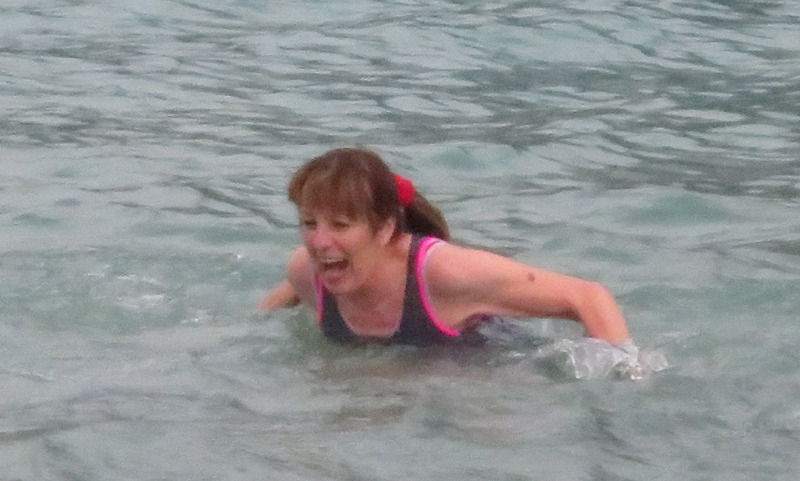 That said, on one afternoon there was the opportunity to take the ‘polar plunge’ and dash down an Arctic beach for a dip. I can vouch for the fact it was truly bracing. Those brave (or mad) enough to do it were rewarded with a fiery shot of aquavit on return and a commemorative certificate.
That said, on one afternoon there was the opportunity to take the ‘polar plunge’ and dash down an Arctic beach for a dip. I can vouch for the fact it was truly bracing. Those brave (or mad) enough to do it were rewarded with a fiery shot of aquavit on return and a commemorative certificate.
On other days we learned more about the history of the area, seeing old blubber ovens and the stark stones of a whalers’ graveyard. Controversial as it is today, whaling became a major industry after Svalbard was discovered by Dutchman Willem Barents in 1596 and by the 17th century the English Muscovy Company and Dutch Noordsche Company were at fierce loggerheads as they descended on Spitsbergen to claim the lucrative income from the heating, lighting and industrial oils made from burned down blubber and whalebones used in clothing, umbrellas and other products.
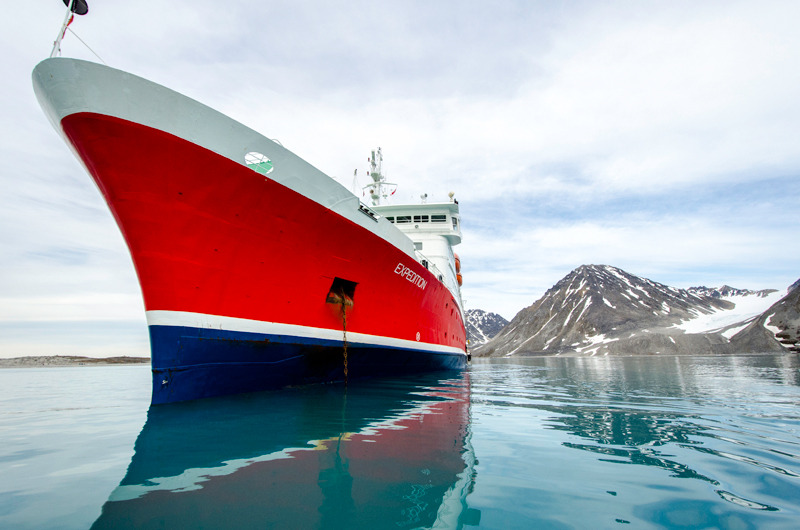 While insomniacs might struggle with the long hours of summer daylight when the sun barely sets (best to bring an eye mask to block out the chinks of light that find their way through the cabin curtains), the plus side is virtually round the clock sightseeing. One evening, after dinner, we gathered on the open deck to marvel at the dramatic 300ft Alkefjellet. The sheer cliffs are spectacular enough in their own right but in the summer months every inch of the rock face is teeming with an estimated 60,000 breeding pairs of Brunnich’s Guillemots. We watched spellbound at the seemingly organised chaos of birds flying on and off the cliffs and into the sea to find food for their chicks. The remarkable night was capped by the eagle-eyed captain spotting another of the eight polar bears we saw during the week, members of the estimated 3,200-strong Barents Sea population.
While insomniacs might struggle with the long hours of summer daylight when the sun barely sets (best to bring an eye mask to block out the chinks of light that find their way through the cabin curtains), the plus side is virtually round the clock sightseeing. One evening, after dinner, we gathered on the open deck to marvel at the dramatic 300ft Alkefjellet. The sheer cliffs are spectacular enough in their own right but in the summer months every inch of the rock face is teeming with an estimated 60,000 breeding pairs of Brunnich’s Guillemots. We watched spellbound at the seemingly organised chaos of birds flying on and off the cliffs and into the sea to find food for their chicks. The remarkable night was capped by the eagle-eyed captain spotting another of the eight polar bears we saw during the week, members of the estimated 3,200-strong Barents Sea population.
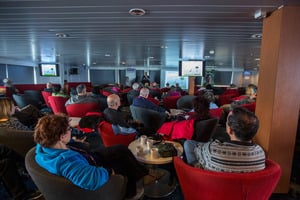 Back on the ship the lack of any phone signals and, for most of the time WiFi, allowed plenty of time to get to know our fellow passengers; an interesting and jovial crowd mainly from the UK, US, Canada and Germany. There was the opportunity to get to know members of the 14-strong expedition team. They were a fascinating bunch too, including the wonderfully named geologist and glaciologist Keith Mountain and splendidly bearded historian and BBC documentary maker Gerard Baker. They all circulated and sat with passengers at mealtimes and were always available to chat and answer questions. Even Captain Sergey Nesterov allowed passengers to go up to the bridge without any formalities.
Back on the ship the lack of any phone signals and, for most of the time WiFi, allowed plenty of time to get to know our fellow passengers; an interesting and jovial crowd mainly from the UK, US, Canada and Germany. There was the opportunity to get to know members of the 14-strong expedition team. They were a fascinating bunch too, including the wonderfully named geologist and glaciologist Keith Mountain and splendidly bearded historian and BBC documentary maker Gerard Baker. They all circulated and sat with passengers at mealtimes and were always available to chat and answer questions. Even Captain Sergey Nesterov allowed passengers to go up to the bridge without any formalities.
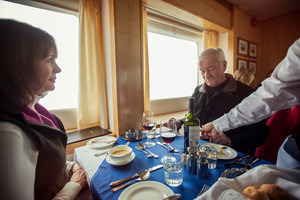 We continued to learn about all manner of things with talks on thought-provoking subjects including climate change to more fascinating facts about the indigenous wildlife, such as seal pups being able to gain one pound in weight per day from their mother’s fat-rich milk. That said, a few of us probably put on a fair bit of blubber thanks to the plentiful and substantial fare served aboard G Expedition!
We continued to learn about all manner of things with talks on thought-provoking subjects including climate change to more fascinating facts about the indigenous wildlife, such as seal pups being able to gain one pound in weight per day from their mother’s fat-rich milk. That said, a few of us probably put on a fair bit of blubber thanks to the plentiful and substantial fare served aboard G Expedition!
Still, we deluded ourselves that it was an integral part of immersing ourselves in Friluftsliv – the enjoyment of the hearty ‘free air’ outdoor Norwegian lifestyle – and an additional personal thermal layer was helpful in reducing the chill of the polar plunge (believe me, it wasn’t!).
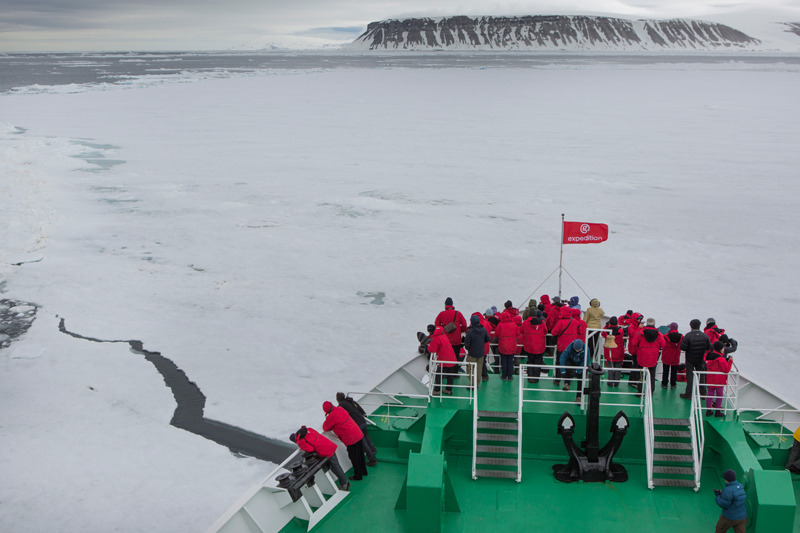 But as we said a sad farewell to G Expedition back in Longyearbyen we wouldn’t have missed any of it.
But as we said a sad farewell to G Expedition back in Longyearbyen we wouldn’t have missed any of it.
From Atlantic walrus to Zodiac tours – and everything from awe-inspiring icy dips, the surreal spectacle of round-the-clock daylight and unforgettable wildlife sightings in between – our voyage was an A to Z of incredible Arctic adventures.

